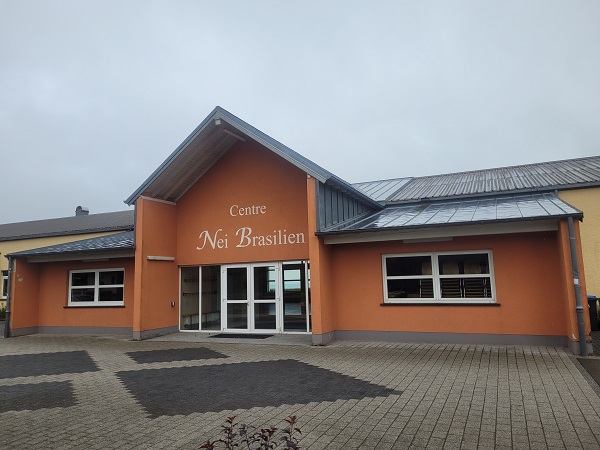 Centre Nei Brasilien;
Credit: Jazmin Campbell, Chronicle.lu
Centre Nei Brasilien;
Credit: Jazmin Campbell, Chronicle.lu
Throughout August, Chronicle.lu will be shining a spotlight on various villages across the Grand Duchy; the focus is mainly on some of the (perhaps) lesser-known villages with particular points of interest or an interesting history (e.g. cultural and/or industrial heritage).
The next article in this series is dedicated to Grevels, a village in the municipality of Wahl in western Luxembourg (Canton Redange) with a population of about 300. Grevels (Gréiwels in Luxembourgish) is located next to the tiny village of Rindschleiden and a short drive from the current municipal seat of Wahl. Note that the neighbouring municipalities of Wahl and Grosbous will officially merge on 1 September 2023, with the seat moving to Grosbous.
A quick stroll around the small village of Grevels, which is surrounded by rolling hills and fields, reveals some houses, a primary school and a "maison relais" (childminding service), a cultural centre and a fire and rescue centre. At the heart of the village is its church (Église Saint-Donat) and cemetery, which are located next to a more modern-style columbarium. Inside the church, one can find the statue of its patron saint, Saint Donatus, placed high on a neo-Gothic altar.
In fact, this church has played a central role in community life in Grevels since its construction in 1860. To better understand this, one needs to look even further back to 1828 when dozens of Luxembourgish families decided to emigrate and start a new life in Brazil. Having gained its independence from Portugal in 1822, the newly created Empire of Brazil had encouraged Europeans to come and settle there. Thousands left Europe for Brazil in the hope of better living conditions and job opportunities. In Luxembourg, a few dozen families made their way to Bremen (Germany) in 1828 for the onward sea journey to Brazil; they had sold all their belongings and left everything behind. Many were turned away at the port (some had been tricked) and forced to return penniless to Luxembourg. The government resettled them in a new area encompassing "Grevels" and "Nei Brasilien" (New Brazil), which was only later renamed "Grevels".
A leaflet (produced by the municipality of Wahl) available in the church today details their fates: these families struggled to settle back into life in Luxembourg; their neighbours disliked them and accused them of theft. Children were not welcome at schools and churchgoers had to remain standing. The situation changed when the new parish priest Nicolas Jost took over in Rindschleiden in 1856. He raised money across the country for these poor people and helped them obtain government and municipal support. A local farmer was encouraged to donate some land on which to build a church and a school. Works on the church began in 1860 before it was solemnly consecrated at the end of 1864. The parish priest entirely financed the church himself as there were no funds left, and the structure became the heart of community life in the village.
It was not until 1957, however, that the village officially gained the sole name of "Grevels" and became part of the municipality of Wahl; before then, residents had been spread out across three different municipalities (Wahl, Heiderscheid and Grosbous), which made decision-making - particularly regarding infrastructure - a challenge.
The church currently also features three artworks by Luxembourgish artist Carlo Schneider; the pieces depict the unsuccessful emigration story of these families, as well as the construction of the local church and Grevels' route to becoming a village in its own right. As Carlo Schneider explained to Chronicle.lu, he was asked to produce the paintings as he had lived near Grevels in Wahl before moving to Switzerland. Commenting on the meaning behind the works, he said: "In fact, today the story of these migrants seems funny, but in these times it must have been dramatic for these people."
Towards the exit of the village, in the direction of Koetschette, one can find the aptly named "Centre Nei Brasilien" cultural centre.
Just in front of this centre is a stone memorial dedicated to the 26th Infantry Division of the United States Army which liberated the German-occupied area in December 1944. The plaque reads (translated from Luxembourgish into English): "We have not forgotten our American friends from the 26th Infantry Division, who liberated the municipality of Wahl from German occupation in December 1944. We honour and thank them for their service. The municipality of Wahl and Friends of Patton's 26th Infantry Division. Night Vigil 2016."














